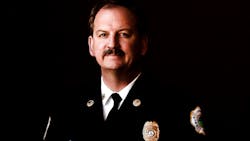Zero preventive trauma deaths. Is it possible, and do first responders hold the key to this lofty goal?
Trauma accounts for at least 200,000 U.S. deaths per year. Recognizing this, in its 2016 report, the National Academies of Sciences, Engineering, and Medicine recommended measures to improve the quality of trauma care. Most firefighters and, certainly, rescue officers will tell you that the use of hydraulic extrication equipment every tour has faded. The sense of urgency and the need to get off scene and to the trauma center seem to be lacking attention or a quality metric. A new normal needs to be considered, and everything that we do needs a different approach or to revisit principles that we strayed from.
A lot of things have changed since the early Vietnam-era medics hit the streets and the 80s scoop-and-run was the law of the land. Intravenous lines and intubation were done on the go, and prolonged scene times would draw the attention of medical direction. Now, we see serious improvements in outcomes in several cities where law enforcement throws a victim into a vehicle and drives to the hospital. We need to look at why this is becoming a growing trend or, at least, popular in the literature. A serious look at first responder performance in recognizing injury patterns, the extension that a paramedic engine company can put on scene time and thoroughness of assessment must be undertaken. All or some might be contributing to the bad or suboptimal outcomes with trauma.
Hands on? Hands off?
Decades ago, when cars were involved in head-on collisions, we saw more frontal chest wall injuries and lower extremity fractures. Paramedics and EMTs were taught the three impacts: the vehicle striking something; the body striking something inside of the vehicle; and the organs inside of the body hitting or dislodging inside of the body. Since then, seatbelts and airbags prevent/lessen those injuries. In the past decade, unibody construction and new vehicle frames brought about the displacement of energy to lessen impacts.
However, such changes in automobile technology have generated new patterns, which often hide facts in automotive crashes. Now, serious injuries come from excessive speed or ejection, with moderate injuries in the feet, forearm and wrist.
To get a better handle on trauma, providers must get their hands on a trauma victim and complete their head-to-toe survey. (Often, you see a visual assessment—the so-called hands-in-the-pocket survey.) A lot of societal and cultural changes have placed barriers between providers and patients, which encourages less hands-on assessment. The role of the electronic record on scene also gives a provider a reason not to get his/her hands on the patient.)
However, the speed that’s attained by many high-performance cars—and their lighter weight going against a large mass—still creates enough energy transfer to create serious injuries. Often, the mass and velocity exponentially change with higher speeds. Furthermore, side-impact collisions continue to create passenger-space intrusion, and fractures now often are found on the posterior or lateral rib margins.
No longer can we rely on the appearance of the obvious. What often appears to be a non-event can hide an insidious injury. Without a thorough examination, abdominal distention, rigidness and bruising can be overlooked. The same goes for contusing of the bowel or the mesentery of a child on whom the restraint was positioned too high when the vehicle he/she was in was rear-ended with massive impact. Let’s not dismiss the growth of the use of bicycles and the injury patterns that crashes can involve (i.e., the encapsulated spleen from a mountain bike crash that manifests itself days later with a rupture).
Probing matters
The fire service can be a key player in the battle against trauma. For example, the San Antonio Fire Department is setting the standard for the use of whole blood in the field (firehouse.com/21094923).
The data still support that long scene times create bad outcomes, so our role in the lofty goal of zero preventive trauma deaths is simple: Get back to systematic hands-on patient assessment. Always have a high index of suspicion and be curious. That said, 10 minutes still is our piece of the golden hour in most severe cases of trauma. Officers should keep the clock on the scene time and move the call along.
About the Author

Bruce Evans
Fire Chief
Bruce Evans, CFOD, SEMSO, NRP, MPA, is the fire chief for the Upper Pine River Fire Protection District, which is located outside of Durango, CO. He retired as an assistant chief from the North Las Vegas Fire Department after serving 27 years in Southern Nevada’s Fire and EMS system. Evans has been a course developer for many of the National Fire Academy curriculums and serves as a technical writer. He is the recipient of the prestigious 2010 James O. Page EMS Achievement Award and was awarded the NAEMT Presidential Leadership Award in 2014. The Colorado Governor appointed Evans to the State Emergency Medical and Trauma Advisory Committee in 2014. He is NAEMT’s liaison to the National Academies of Medicine preparedness committee and coauthored texts on EMS management and crew resource management and wrote a text on EMS quality improvement.
